As a Danish public institution, the Odense main campus of the University of Southern Denmark transforms into an abandoned place in July, like a deserted Wild West town with tumbleweeds rolling across the landscape. Therefore, it was convenient for me to do some dissemination activities for MEMORISE. The main destination was Graz in Austria, where the annual Digital Humanities conference with the theme “Collaboration as Opportunity” took place.
July 8: After a flight to Vienna and a bus ride to Graz, I arrived at Graz Murpark. I decided to walk my 3 km to the hotel to visit the memorial of the former forced labour camp at Graz Liebenau. Memorial means in that case an information board in the center of the Maria-Cäsar-Park. It introduces the historical background and it explains what the camp stands for: “verführt” (resettled), “verschleppt” (deported), “vernichtet” (exterminated), “verurteilt” (convicted) and “vergessen” (forgotten). A virtual tour connects historical photographs with a map at six locations. This concept relates to MEMORISE, because connecting geography with historical documents is one of our main targets. The story of the camp is told in six sections and ends with “It is an open question whether there are still victims under the ground.” For the visitor on site an uneasy feeling sets in…
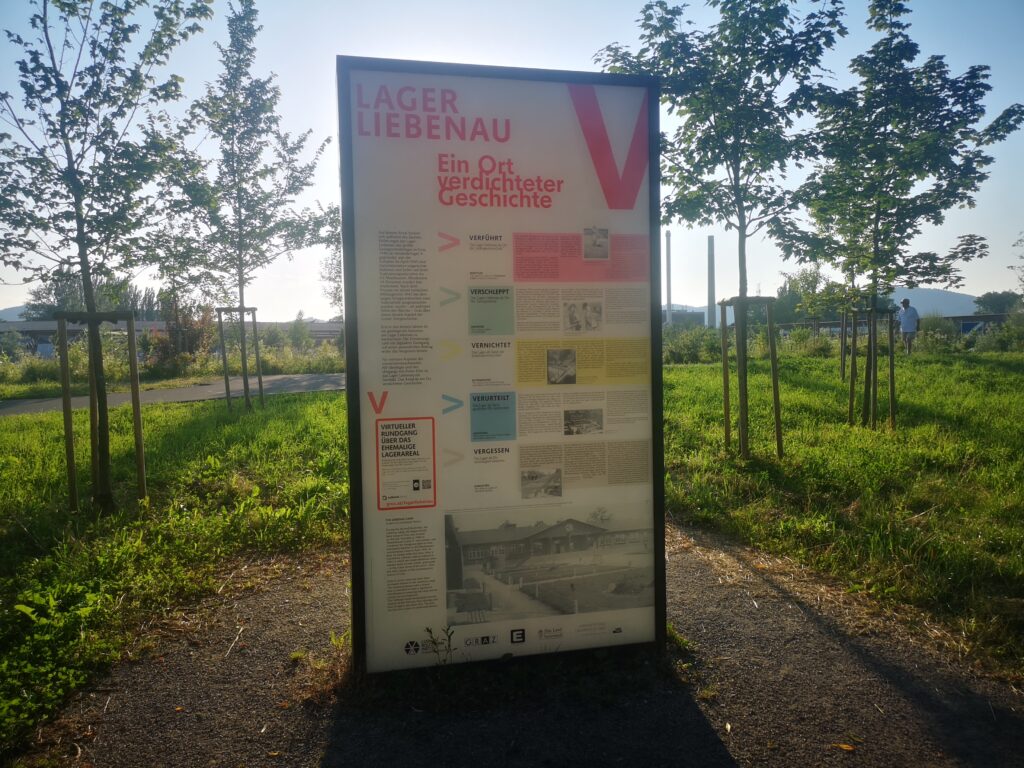
Information board on the former site of the forced labor camp Graz Liebenau
July 9: At the Kunsthaus Graz, the Horizon 2020 InTaVia project organizes the DH pre-conference research symposium “Smashing the Silos! The Future of Cultural Heritage Information and Visualization“, in which project results and the plans for the final project months are presented, and related themes are discussed with international digital humanities experts. As a partner in the project, SDU develops a storytelling suite, which was presented by Jakob Kusnick together with Carina Doppler (Fluxguide) and Johannes Liem (Donau-Universität Krems). Storytelling is also a key component for MEMORISE, and we will exploit our results from InTaVia to MEMORISE. In the concluding panel, I got the opportunity to present MEMORISE to the audience. My presentation addressed the importance of developing individualized solutions for the general public to encourage them to interact with cultural heritage.
July 10: Digital-humanities-conference-registration-day. Getting-to-know-the-city-day. Meeting-DH-buddies-day. Getting-to-know-new-DH-people-day. Talking about MEMORISE was central to many discussions that day.
July 11: What do we do with 3,500 Hungarian Holocaust testimonies? I got up early at 5:15 to travel to Budapest, Hungary. I had arranged a meeting with a group of historians from the Holocaust Memorial Center (Holokauszt Emlékközpont) to present the MEMORISE project to them and to demonstrate first prototypes. It is of particular importance for us to onboard as many institutions as possible, so that everyone gets the opportunity to include memories on Nazi persecution into our infrastructure and to make use of the digital tools we develop. Next to an exchange on potential collaborations in the MEMORISE context, the group shared a database of testimonies from Hungarian Holocaust survivors. Although Hungarian is not the target language of our project, about 500 of the 3,500 testimonies were translated into English. Overall, the corpus is an extremely valuable resource for us, since it documents the Holocaust for Hungary. After the meeting, I visited the very well designed museum. The sections are chronologically ordered, each section stands for a time period documenting Jewish and Roma life in Hungary, being impacted by fascism and national socialism. Five families are introduced at the beginning and followed across these time periods; most of the family members were murdered. This is a successful concept that helps visitors of the memorial to connect with personal fate. Through our individualization idea, MEMORISE plans to extend this idea. After more than two hours I leave the memorial in hot 35 degrees Celsius and check into my hotel near the main station. In the evening, I get the chance to see a bit of beautiful Budapest. A few impressions of my day in the city…
July 12: Early morning, back to Graz with a direct five-hour train connection. Back at the DH conference, I present the first results of MEMORISE to the interested audience. Many people visit the poster, some share personal stories. Richard Khulusi, my former PhD student (now working at the Bergen-Belsen Memorial) and developer of the prototypical diary explorer that motivated MEMORISE, joins me to present current prototypes to the DH community.
You can download the poster here: https://memorise.sdu.dk/wp-content/uploads/2023/07/Memorise.pdf
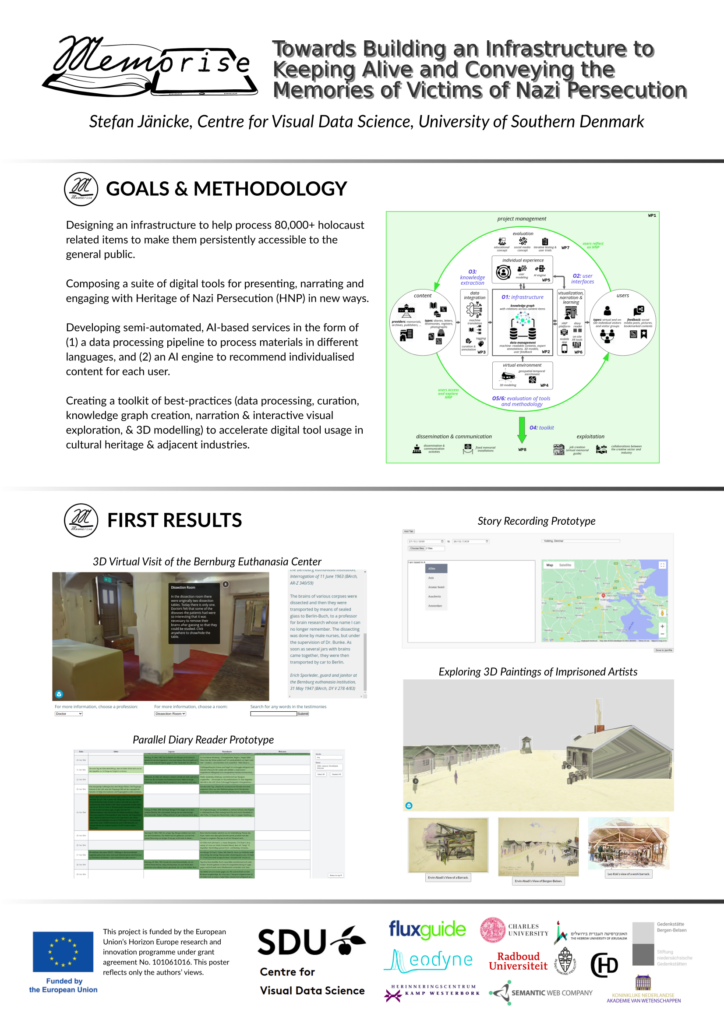
July 13: In the first afternoon session of the DH conference, Agiatis Benardou presents “Points of View in a Virtual Concentration Camp: The case of Block 15 in Haidari, Greece” (a related paper can be found here). Block 15 is a building of the former Haidari concentration camp where prisoners were completely isolated. Today it is located in an operational military facility and is therefore not open to the public. To tell the story of the camp, researchers created an immersive virtual reality experience in which users are the main characters in a narrative. In the prisoner “role”, they take on a “mission” that unfolds in ten scenes. Although MEMORISE’s conceptual framework for digital tools is rather critical of approaches that put users in the perspective of prisoners, we want to share experiences and results with Agiatis’ team to learn more about already evaluated best practice solutions.
July 14: On the last day I am “only” the proud supervisor of two of my students, Yasmin Hawar Abo Bakir Shuan and Tariq Yousef, who present two research papers that (this time) have nothing to do with MEMORISE. In the afternoon, I head back to Denmark with a lot of impressions and future opportunities for our project.
Author: Stefan Jänicke



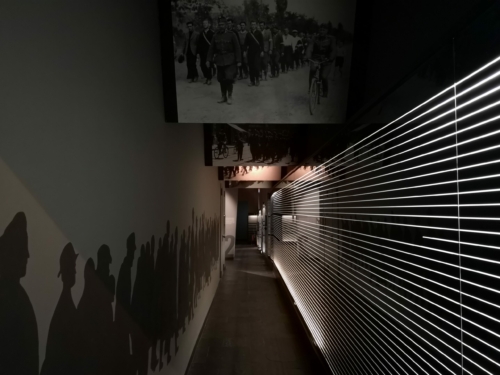
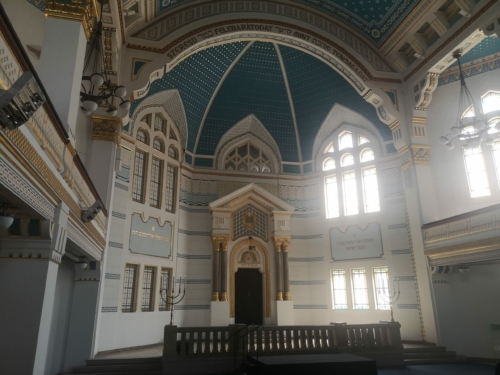
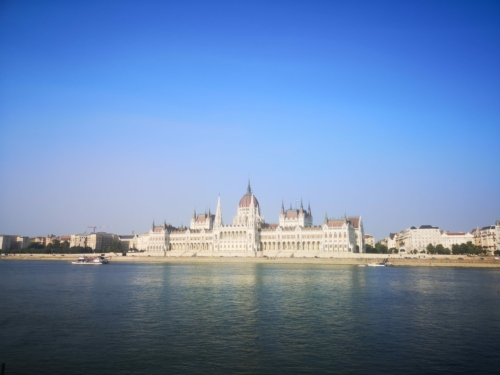
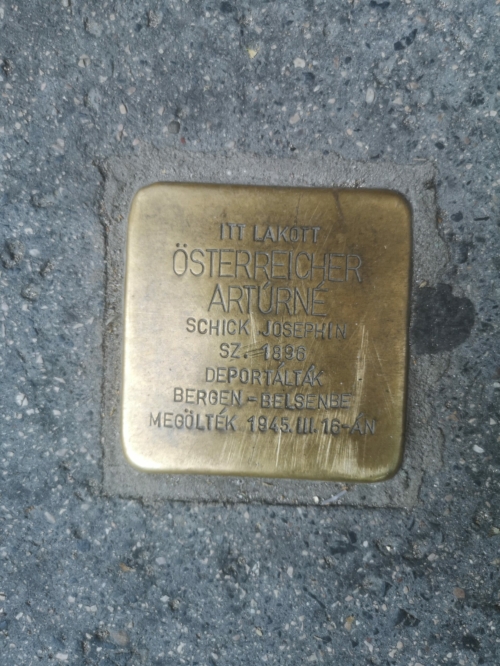
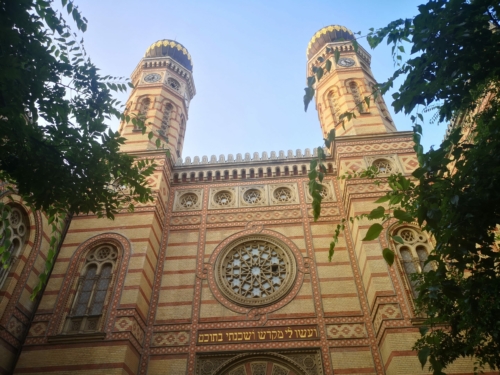
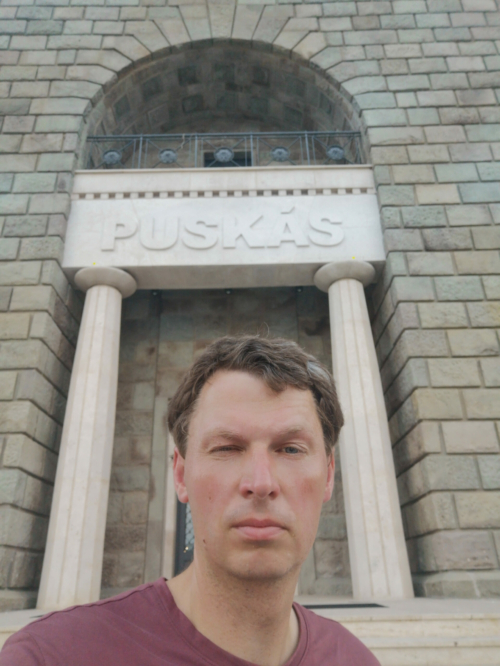
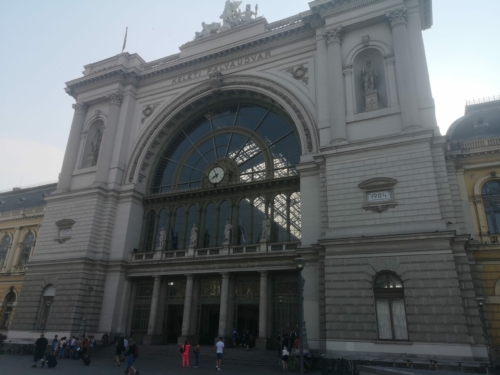
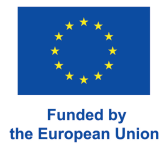
2 Responses
Thanks for sharing. I read many of your blog posts, cool, your blog is very good.
Reading this was like listening to a song that fills you with both peace and a desire for deeper understanding.